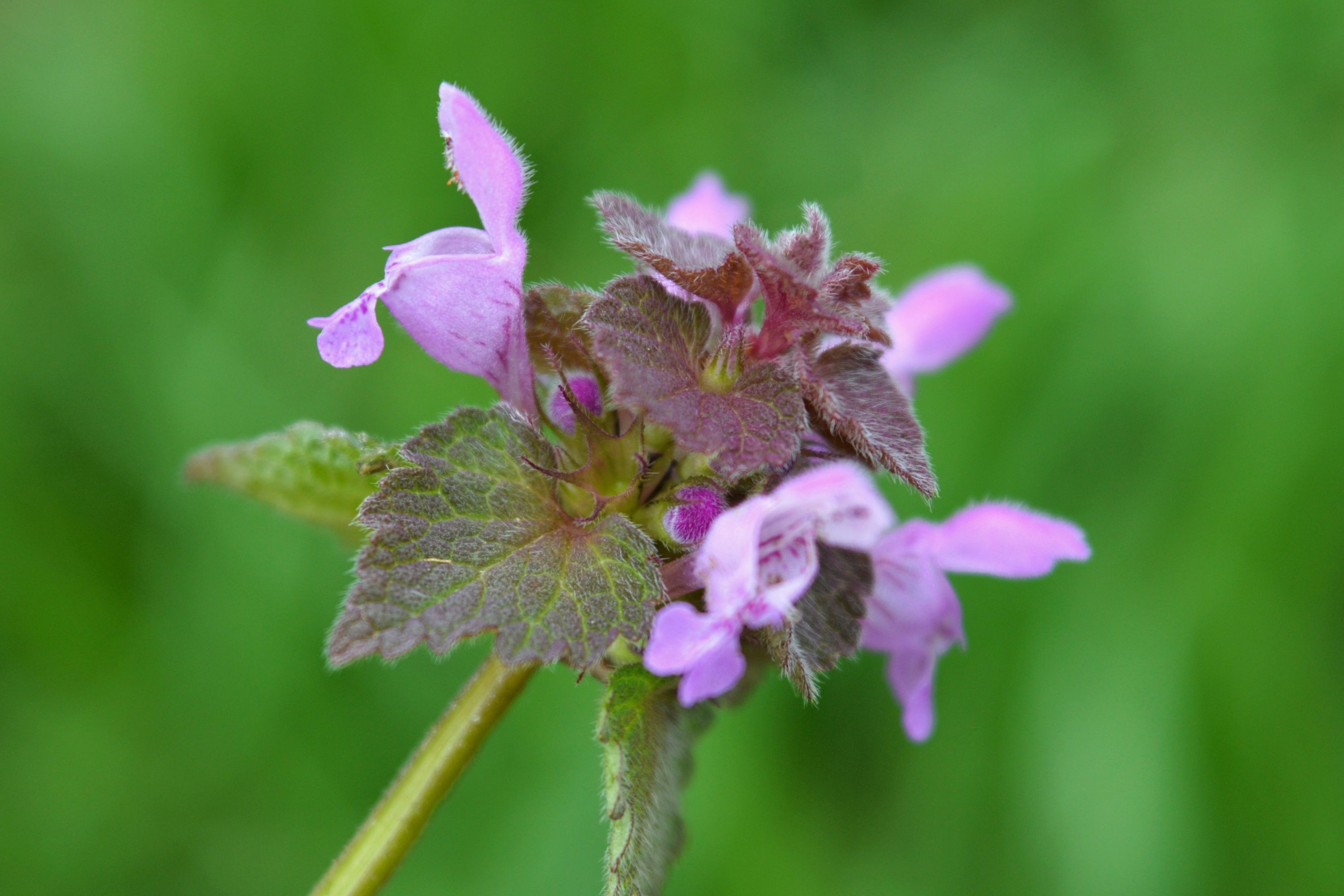Red deadnettle
(Lamium purpureum)

Description
Lamium purpureum, also known as purple dead-nettle, is a herbaceous flowering plant in the mint family, Lamiaceae. It is native to Europe and Asia but has naturalized in many other parts of the world, including North America. This plant is often considered a weed due to its ability to grow in disturbed areas and its rapid spreading habit. However, it is also a valuable plant with many medicinal and culinary uses. In this comprehensive guide, we will explore the various aspects of Lamium purpureum. Taxonomy Lamium purpureum belongs to the genus Lamium, which includes about 40 species of herbaceous perennial plants. The genus name Lamium comes from the Greek word "lamia," which means a type of mythical creature that feeds on blood. This refers to the belief that some species of Lamium have medicinal properties that can stop bleeding. The species name "purpureum" means purple and refers to the color of the flowers. Description Lamium purpureum is a low-growing, annual or biennial plant that reaches a height of 10-50 cm. It has square stems that are hairy and slightly reddish in color. The leaves are opposite, heart-shaped or kidney-shaped, with a pointed tip and serrated margins. They are also hairy and can range in color from green to purplish-green. The flowers of Lamium purpureum are arranged in dense clusters at the top of the stem. They are tubular, with a purple or pink color and a distinct hood-like upper lip. The flowers bloom from early spring to late summer and attract pollinators such as bees and butterflies. Distribution and Habitat Lamium purpureum is native to Europe and Asia but has naturalized in many other parts of the world, including North America. It is found in disturbed areas such as fields, roadsides, and gardens. It prefers moist soil and partial shade but can also tolerate full sun and dry soil conditions. Cultivation and Propagation Lamium purpureum is easy to grow and can be propagated by seeds or cuttings. It prefers moist, well-drained soil and partial shade but can also tolerate full sun and dry soil conditions. The plant can be grown in containers, rock gardens, or as a ground cover. Propagation by seeds: Sow seeds in the spring or fall. The seeds should be planted 1 cm deep and spaced 10-15 cm apart. Germination can take up to three weeks. Propagation by cuttings: Take stem cuttings in the spring or early summer. Cut a 5-10 cm section of the stem and remove the lower leaves. Dip the cut end in rooting hormone and plant in moist soil. Keep the soil moist and in a shaded area until the cutting has rooted. Medicinal Uses Lamium purpureum has been used for medicinal purposes for centuries. The plant contains various compounds, including flavonoids, tannins, and phenolic acids, that have anti-inflammatory, antibacterial, and antiviral properties. Some of the medicinal uses of Lamium purpureum are: Respiratory infections: The plant has been traditionally used to treat respiratory infections such as colds, coughs, and bronchitis. It has expectorant properties that can help loosen phlegm and relieve coughing. Wounds and bleeding: The plant has astringent properties that can help stop bleeding and promote healing. It has been used topically to treat cuts, bruises, and hemorrhoids. Menstrual cramps: The plant has been traditionally used to relieve menstrual cramps and regulate menstrual flow.
Taxonomic tree:







